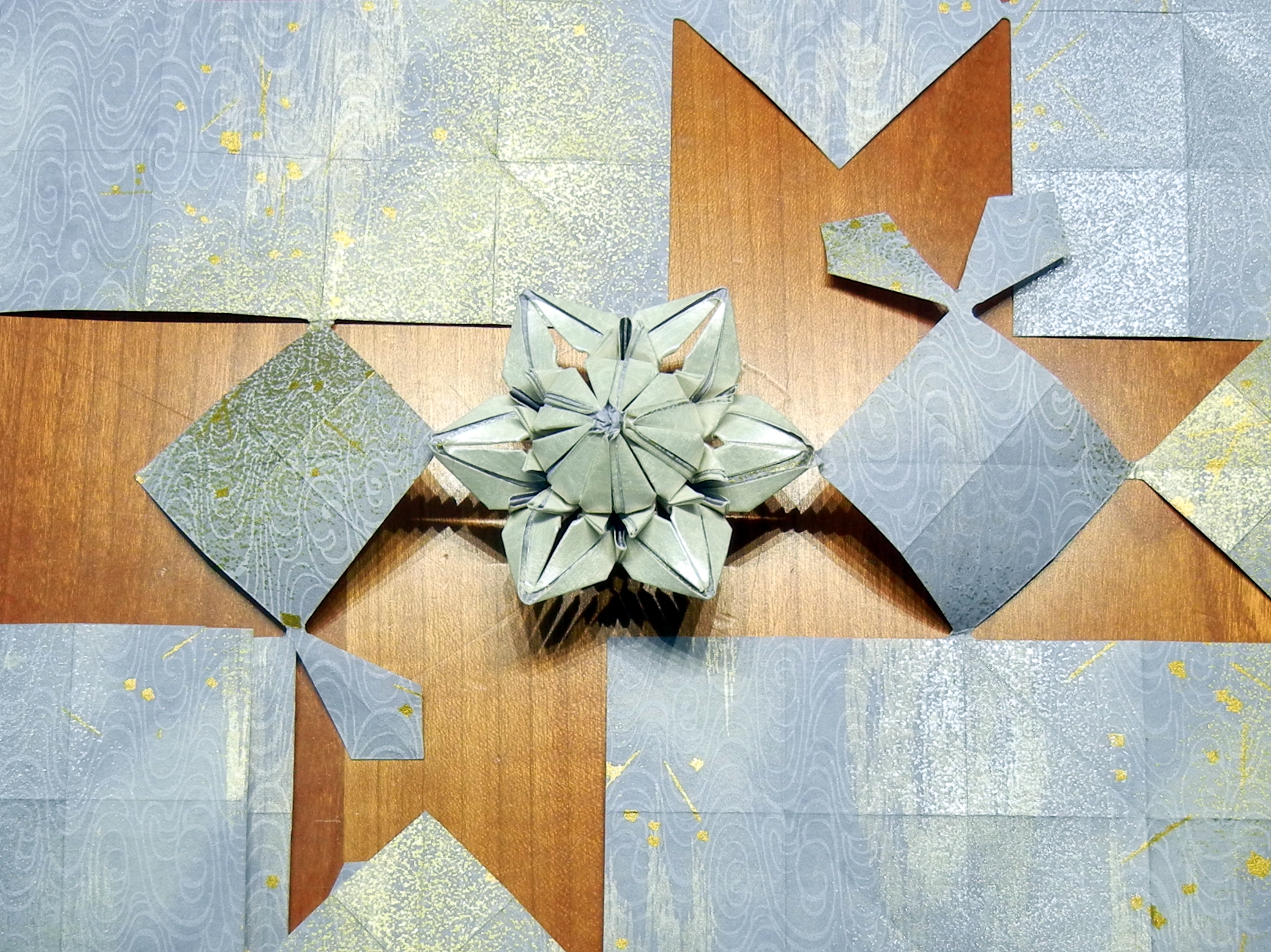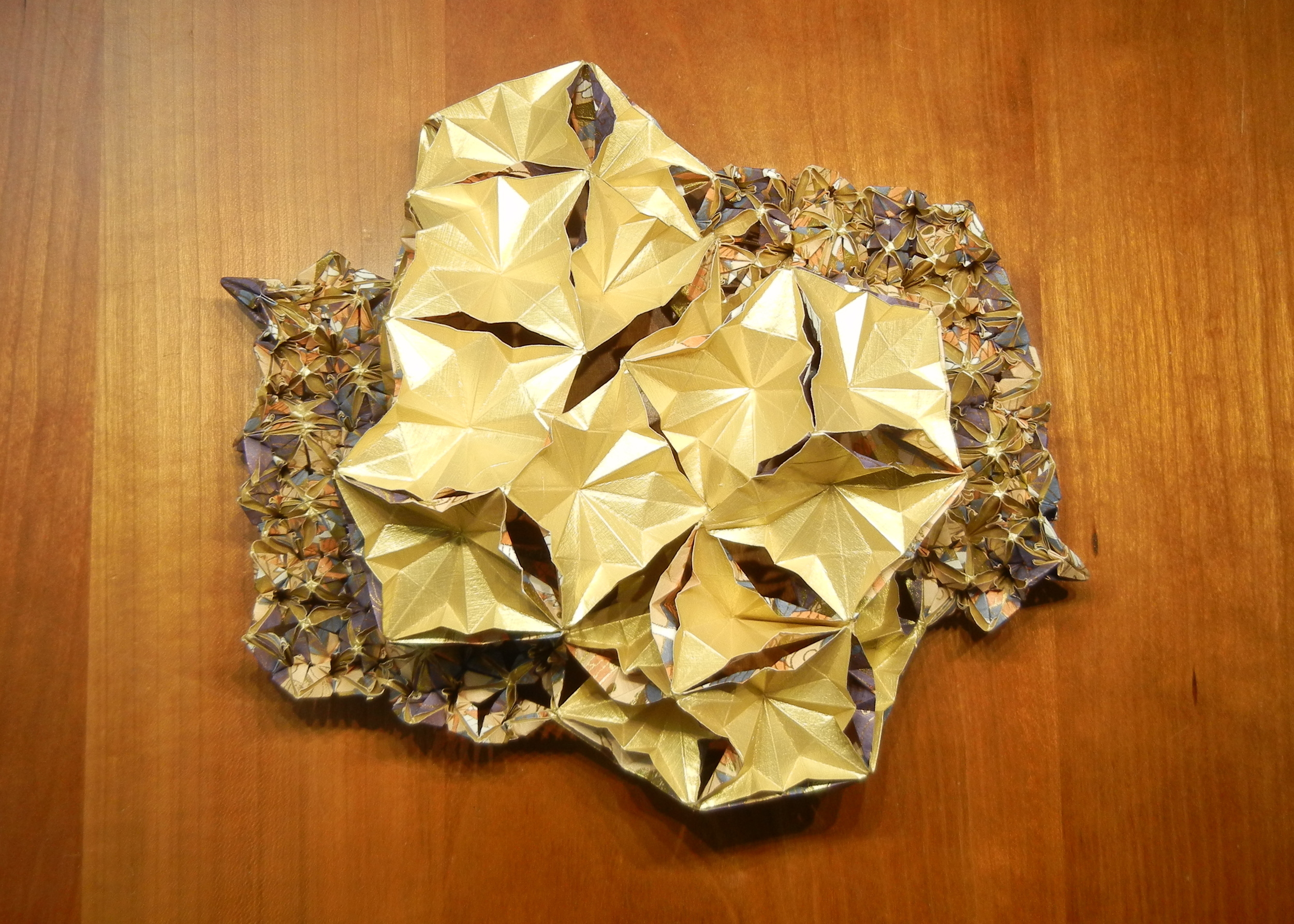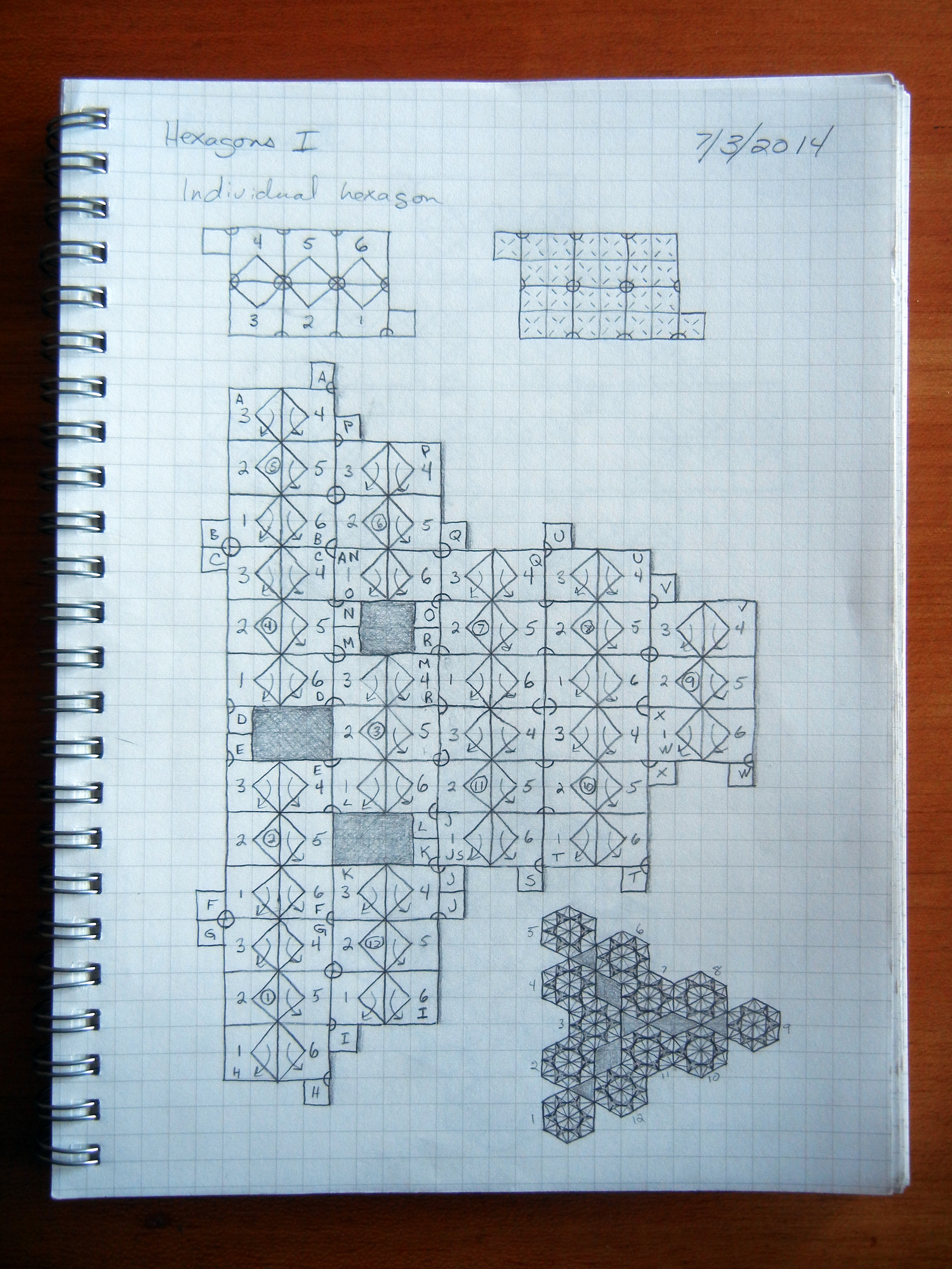When: Starting March 22nd, 2017 and continuing until late summer
Where: 1600 Amphitheatre Pkwy, Mountain View CA, B43 Lobby Stage/Wall (Google main lobby)
I am incredibly excited to announce that I have been given the honor of being included in Google's GoArt series. Starting on March 22, 2017 and continuing until late summer, I will be displaying a variety of my pieces in the main lobby of the Google campus, right under the spaceship. The lobby is ideal for showing my art; the space allows for viewing from near and far and the beautiful lighting will bring out the shadows. A big thank you to Janice Myint and the GoArt program for this amazing opportunity!
On display will be a number of my signature pieces, including:
- Gravity Well: A piece inspired by the physics concept of the same name. The icosahedron nestled in a ridge is an impossibility created out of contiguous interconnecting liles.
- Lens Flare: The first large Rokoan origami piece incorporating both lilies and cranes. I use contrasting colors, scale and shadow to draw your eye along its folds.
- Red Cranes: My largest fold, comprised of 230 interconnected cranes built into a massive, symmetrical shape that creates a field of shadows as impressive as the physical piece itself.
While this show is not open to the public, I will arrange a few tours during the show, so please contact me at desk@jenniferkuczenski.com if you would like to be included.
In addition, the evening of March 18th I will be hosting an open studio where you can preview the pieces in this show. Stop by to see these intricately engineered, expertly constructed, and unbelievably beautiful creations. Public Facebook event at https://www.facebook.com/events/723987344449232/.


















































